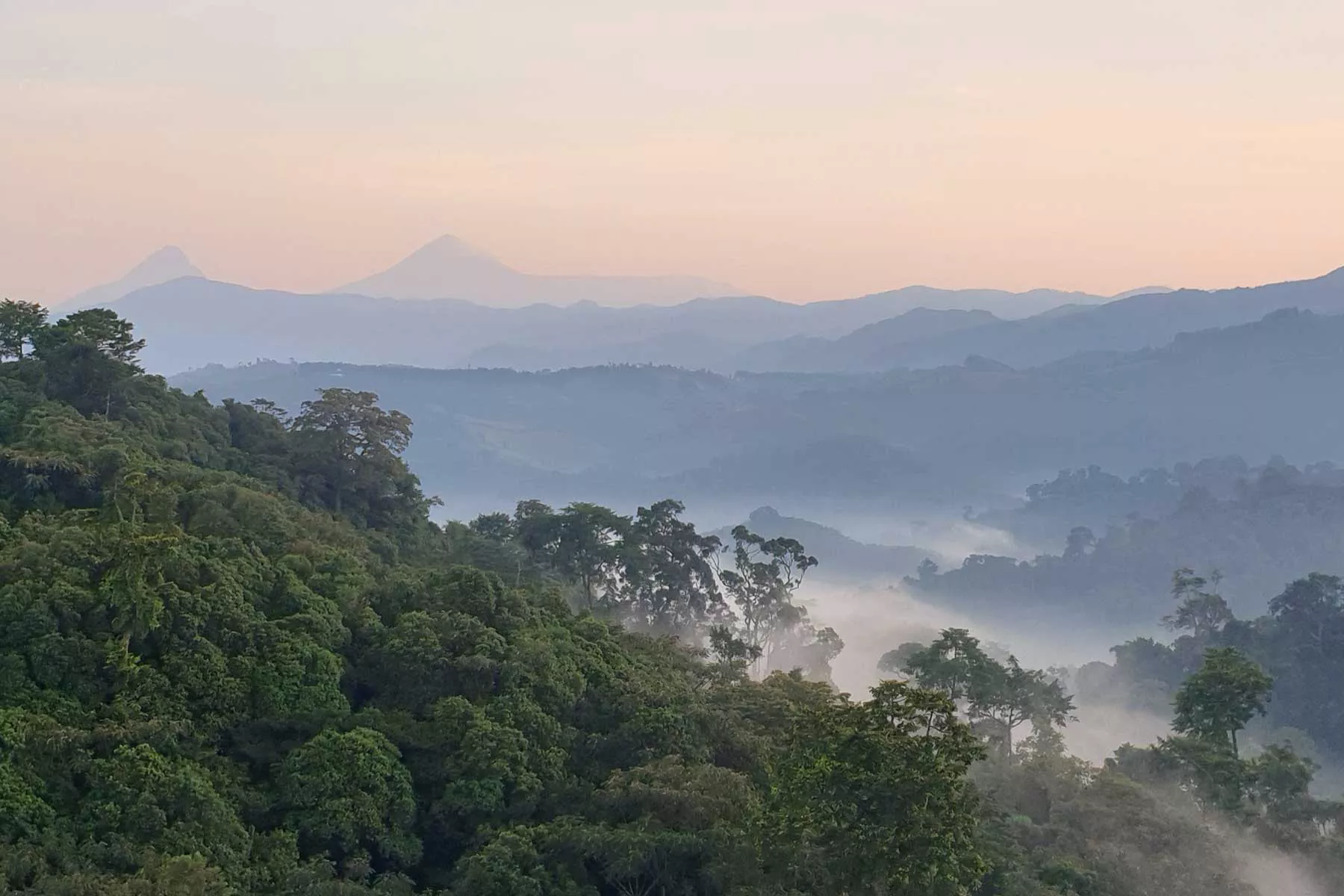1. Overview
This article highlights the revival of Gishwati Forest in Western Rwanda, focusing on its burgeoning primate population and the efforts behind its restoration.

Western Rwanda’s much-depleted Gishwati Forest — and its primate population — is slowly being restored. Observing primates in their natural habitat is an unparalleled thrill, as noted by conservationist Thierry Aimable Inzirayineza during our visit. The sighting of a L’Hoest’s monkey, distinguished by its white neck ruff, was a key moment in the restoration efforts led by his Forest of Hope Foundation. The project’s aim is to acclimate primates to human visitors, symbolizing progress in wildlife conservation.
2. Gishwati Forest: A Conservation Success
The moment was enhanced as we enjoyed the jungle sounds and sights, alone except for our guides. Gishwati is now part of Rwanda’s growing ecotourism sector, welcoming its first international visitors.
Located along the biologically rich Albertine Rift, the forest once spanned over 250,000 acres but faced severe degradation due to poaching, deforestation, and the aftermath of the 1994 genocide. Today, despite having been reduced to less than 1 percent of its original area, a dedicated local and international effort through Forest of Hope has led to the survival of about 1,500 acres, with thriving populations of various primates.
3. The Role of Forest of Hope
Forest of Hope was established with contributions from Rwandan environmentalists and international donors. When Inzirayineza joined the project in 2012, he was determined to restore Gishwati. He emphasized the importance of educating local communities on conservation’s benefits, leading to a pledge from the government to develop the area into a national park— Gishwati-Mukura, established in 2019.
Ecotourism has also gained traction, with Wilderness Safaris committing to protecting the forest. As of now, Gishwati Forest covers nearly 4,000 acres, with aspirations to expand. While it remains a small fraction of its original size, it supports healthy primate populations.
4. Primate Populations Flourish
With an increase in monitoring and conservation efforts, Gishwati’s chimpanzee population has grown from 10 to 35, while the golden monkeys have increased from 100 to over 172 in recent years. Bird species have also flourished, with 232 species, including 20 endemics to the Albertine Rift.
5. Visitor Experience
The road to Gishwati offers scenic views of Rwanda’s villages and landscapes. Upon arrival, we stayed at the Forest of Hope guesthouse, which, while basic, provided a comfortable atmosphere with Rwandan decor. My experience was enriched by the sights and sounds of the forest, invigorating as I enjoyed local tea, surrounded by nature.
Although Wilderness Safaris does not operate the guesthouse, they offer hospitality training, enhancing the guest experience. Meals included locally-sourced dishes, showcasing the flavors of Rwandan cuisine.

Historically, Gishwati mainly comprised eucalyptus trees, introduced to mitigate erosion. However, these trees do not sustain the local wildlife. Currently, efforts are underway to replace eucalyptus with native species, thus promoting biodiversity and preserving primate habitats.
As I participated in primate habituation efforts, I realized how crucial human presence can be in comfortingly familiarizing animals with visitors. This proactive approach to wildlife safety is a cornerstone of the conservation strategy.
Our search for golden monkeys led us through the forest, where we encountered several monkeys displaying joyful behavior. The experience underscored the success of conservation in Gishwati, allowing us to witness these incredible animals in their natural setting.
Reflecting on our journey, Inzirayineza expressed his hopes for Gishwati to be recognized as a sanctuary for wildlife enthusiasts, emphasizing the transformation that has occurred over the past decade.
fharwanda.org; Forest of Hope guesthouse from $250 per person, including park permits.
A version of this story first appeared in the August 2022 issue of GoTravelDaily under the headline “New Growth”.





